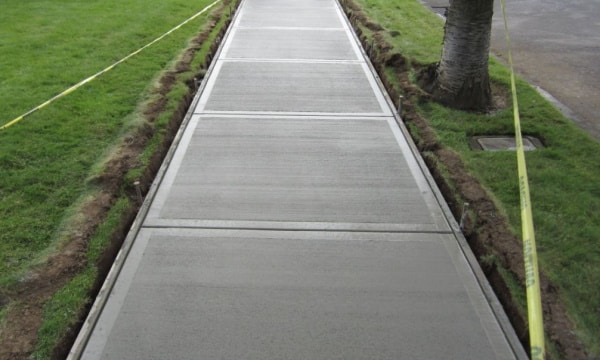Introduction
Welcome to the Utah Flatwork Concrete Company blog! In this article, we will discuss valuable tips and techniques on how to prevent common concrete cracks. As property owners, it’s important to understand the factors that contribute to concrete cracks and how to mitigate them effectively. By following our maintenance tips, you can ensure the longevity and durability of your concrete structures.
Why Concrete Cracks
Concrete is a versatile and widely-used construction material, but it is susceptible to cracking due to various factors. Understanding the reasons behind concrete cracks is crucial in implementing preventive measures.
One common cause is shrinkage. As concrete cures, it undergoes a drying process that leads to shrinkage. This shrinkage can result in tension within the concrete, leading to cracks. Additionally, external factors such as temperature changes, moisture fluctuations, and heavy loads can also contribute to cracking.
5 Tips to Prevent Concrete Cracks
1. Quality Concrete Mix
Using a high-quality concrete mix is essential to minimize the risk of cracks. Opt for a mix that meets industry standards and is suitable for your specific application. A well-designed mix with the right proportions of cement, aggregates, and water can enhance the durability and strength of the concrete.
2. Proper Curing Techniques
Proper curing plays a vital role in preventing concrete cracks. After pouring, it’s crucial to keep the concrete moist and at an optimal temperature for an extended period. This allows the concrete to gain strength and resist cracking. Utilize curing compounds, plastic sheeting, or damp burlap to maintain moisture levels during the curing process.
3. Control Joint Installation
Control joints are deliberate lines or grooves added to concrete to guide where cracks occur. These joints provide a controlled location for cracks, allowing the concrete to expand and contract without damaging the overall structure. Properly placed control joints help relieve stress and minimize unsightly random cracks.
4. Temperature and Moisture Control
Extreme temperature fluctuations and excess moisture can significantly impact the integrity of concrete. During hot weather, use shading or cooling methods to prevent rapid drying and thermal stress. In colder conditions, protect newly poured concrete from freezing temperatures by utilizing insulating blankets or heaters. Moreover, ensure proper drainage to prevent water accumulation around concrete structures.
5. Regular Maintenance
Regular inspections and maintenance are crucial for identifying potential issues before they worsen. Keep an eye out for signs of cracks, spalling, or surface deterioration. Promptly address any cracks that appear and apply appropriate sealants or fillers to prevent further damage. Additionally, practice good concrete maintenance habits such as cleaning, resealing, and avoiding harsh chemicals or de-icing salts.
Frequently Asked Questions (FAQs)
How long does concrete take to cure?
The curing time for concrete varies depending on factors such as temperature, humidity, and the specific mix used. In general, concrete reaches its maximum strength within 28 days. However, it’s important to allow at least 7 days for curing before subjecting the concrete to heavy loads or stress.
Can you prevent all concrete cracks?
While it’s challenging to prevent all concrete cracks, proper construction techniques and maintenance can significantly minimize their occurrence. Following the tips mentioned in this article will help you prevent common concrete cracks and extend the lifespan of your concrete structures.
Are control joints necessary?
Control joints are highly recommended for larger concrete slabs and structures. They allow for controlled cracking and prevent random, unsightly cracks. Properly placed control joints can enhance the durability and appearance of your concrete.
How often should I inspect my concrete?
Regular inspections are crucial to catch any signs of cracks or damage early on. It’s recommended to inspect your concrete at least twice a year. Pay close attention to areas that are exposed to heavy loads, extreme weather conditions, or high foot traffic.
When should I call a professional?
If you notice significant cracks, extensive damage, or structural concerns in your concrete, it’s best to consult a professional concrete contractor like Utah Flatwork Concrete Company. Their expertise and experience will ensure proper assessment, repairs, and the longevity of your concrete structures.
Conclusion
Taking proactive steps to prevent common concrete cracks is essential for property owners. By using a quality concrete mix, implementing proper curing techniques, installing control joints, controlling temperature and moisture, and conducting regular maintenance, you can greatly reduce the likelihood of cracks and enhance the lifespan of your concrete structures.
At Utah Flatwork Concrete Company, we are dedicated to providing top-quality concrete services for residential and commercial properties. If you require professional assistance or have any further questions, feel free to reach out to us at 801-921-7961 or visit our website www.utahflatworkconcretecompany.com to request our services. Let’s keep your concrete strong and crack-free!




